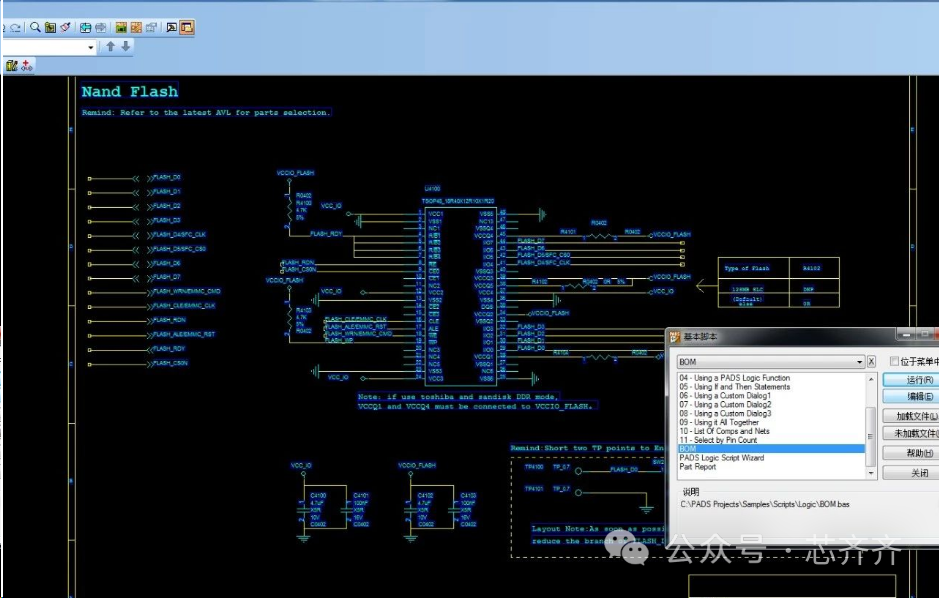- upload bom file
- +86 0755-82770375
- sales@bomkitting.com
How should the cost of PCBA chip mounting be calculated?
PCBA SMT Assembly Cost Structure and Calculation Guide
For customers new to PCBA (Printed Circuit Board Assembly) SMT (Surface Mount Technology) processing, a clear understanding of cost components and calculation methods—including BOM kitting—is crucial for controlling hardware costs. This article systematically explains the PCBA cost structure, cost calculation methods for each link (with a focus on BOM kitting), and accounting techniques to help efficiently plan budgets.
I. Core Process of PCBA SMT Assembly
PCBA SMT assembly is a core link in circuit board manufacturing, and its process determines the cost composition. The main steps (integrating BOM kitting) are as follows:
- BOM parsing and kitting preparation: Parse the BOM (Bill of Materials) from hardware design files, organize components by type, and complete BOM kitting (sorting, counting, and verifying components to ensure quantity and model consistency with the BOM);
- Component procurement: Based on the kitted BOM, purchase missing components, including preparation for material loss;
- Stencil making: Used for solder paste printing, which is a one-time or reusable cost;
- Component placement: Mount SMD (Surface Mount Device) components onto the PCB, serving as the core process;
- Soldering: Complete the soldering of components and PCB using equipment such as reflow ovens;
- Soldering inspection: Visual inspection, ultrasonic board cleaning, functional testing, etc., to ensure product qualification.
II. Cost Composition of PCBA SMT Assembly
The PCBA cost consists of five core modules (incorporating BOM kitting cost). If the customer provides some materials or completes kitting independently, the cost of the corresponding module can be excluded:
- PCB board cost: Waived if the PCB is supplied by the customer;
- Component procurement cost: Waived if components are supplied by the customer;
- BOM kitting cost: Covers labor, time, and verification expenses for sorting, counting, and confirming components (waived if the customer provides pre-kitted BOM);
- SMT processing cost: Covering SMD placement and DIP (Dual In-line Package) post-soldering;
- PCBA testing cost and assembly cost.
III. Detailed Calculation of Each Cost Component
1. PCB Board Cost
After providing the R&D-designed PCB files, open the PCB schematic and export the corresponding BOM (the basis for subsequent BOM kitting). PCBA processing service providers will manufacture bare PCB boards based on the PCB files, which generates the first part of the cost—the PCB board cost.

The PCB board cost depends on the process complexity, including factors such as:
- Number of board layers (e.g., 4-layer board, 8-layer board);
- Board material type (e.g., FR4, aluminum substrate, carbon ink board, FPC);
- Board material brand and standard (e.g., Shengyi TG135, Jiantao TG150);
- Board manufacturing processes (e.g., gold immersion, tin spraying, bare copper, via hole oil covering, resin hole plugging).
Long-term cooperation with one-stop PCBA SMT processing service providers (who integrate PCB manufacturing, BOM kitting, and SMT processing) can bring more favorable prices, as unified scheduling optimizes both pricing and delivery time.
.png)
Calculation method: First, confirm the PCB price per square meter. Then calculate how many PCB boards can be produced from one square meter of PCB material. Finally, divide the price per square meter of PCB by the number of PCBs that can be produced per square meter to get the unit price of a single PCB.
2. Component Procurement Cost & BOM Kitting Cost
(1) Component Procurement Cost
After parsing the BOM from the hardware design files, BOM kitting is first conducted: identical components are categorized, quantities are counted, and models are verified to form a standardized kitted BOM. This kitted BOM is then used to calculate component costs and confirm procurement needs.
Processing manufacturers purchase required components according to the kitted BOM. During procurement, attention should be paid to the following:
- Due to reel-type materials (such as resistors and capacitors) and SMT placement losses (e.g., wrong board skipping, failure to timely remove tape and reel), a material loss margin of approximately 5% needs to be included in the kitted BOM quantity;
- Generally, processing manufacturers have long-term cooperative component suppliers, so they can obtain lower procurement prices based on the aggregated demand from kitted BOMs.
(2) BOM Kitting Cost
BOM kitting cost is calculated based on the complexity of the BOM and the number of components, mainly covering:
.png)
- Labor cost: Time spent on sorting components, counting quantities, and verifying models;
- Verification cost: Expenses for checking component consistency (e.g., model matching, batch number recording) to avoid assembly errors;
- Packaging cost: Materials for storing kitted components (e.g., anti-static bags, component trays) to ensure component integrity.
For simple BOMs (fewer than 50 component types), the kitting cost is usually a fixed fee (e.g., 50-200 RMB per kitted BOM); for complex BOMs (more than 50 component types or with special components like precision ICs), the cost is calculated at 0.5-2 RMB per component type.
.png)
3. SMT Processing Cost (SMD Placement + DIP Post-soldering)
The specific SMT processing cost varies depending on multiple factors, such as the type/quantity of components (based on the kitted BOM), process difficulty, and equipment performance. Typically, the SMT processing cost mainly includes labor cost, equipment cost, and material cost. To make an accurate cost estimate, these factors must be comprehensively considered (along with the details of the kitted BOM), and in-depth communication with the SMT processing manufacturer is required.
Key Calculation Factors
- Engineering fee: For production batches greater than 2000 pieces (based on the kitted BOM’s unit quantity), no engineering fee is charged; otherwise, an additional engineering fee is required.
- Component pad count calculation: SMT processing cost is generally calculated based on the number of component pads in the kitted BOM. The calculation standard is:
- 2 pins of an SMT component count as 1 pad;
- 1 pin of a DIP component counts as 1 pad;
- A single chip resistor, capacitor, or diode (common in kitted BOMs) counts as 1 pad;
- A single triode counts as 1.5 pads;
- 4 pins of an IC count as 1 pad.
Count the total number of placement pads on the board through the kitted BOM.
Calculation Formula
SMT processing cost = Number of pads (from kitted BOM) × Unit price per pad
(The processing cost includes auxiliary material costs such as red glue, solder paste, and board cleaning agent; the unit price per pad is generally between 0.01-0.025 RMB.)
(The processing cost includes auxiliary material costs such as red glue, solder paste, and board cleaning agent; the unit price per pad is generally between 0.01-0.025 RMB.)
Other Additional Costs
Costs for PCBA test fixtures, stencils, setup fees, jigs, programming, conformal coating, gluing, and other costs agreed upon by both parties shall be calculated separately (and may be adjusted based on the kitted BOM’s special requirements, e.g., programming fees for ICs in the BOM).
.png)
IV. Tips for Reasonable PCBA SMT Processing Cost Accounting (Including BOM Kitting)
To reasonably calculate the PCBA SMT processing cost (with BOM kitting), the following methods can be adopted:
- Understand the manufacturer's pricing strategy for BOM kitting: Different manufacturers have different charging standards for BOM kitting (fixed fee vs. per-component-type fee). Conduct research on multiple manufacturers to compare kitting costs and overall PCBA costs;
- Optimize BOM kitting for cost reduction: Simplify the BOM structure (e.g., unify component models where possible) to reduce kitting complexity and lower kitting costs;
- Consider the benefits of mass production for kitted BOMs: For mass production, aggregated kitted BOMs can reduce both component procurement costs (bulk discounts) and BOM kitting costs (fixed kitting fees spread across more units);
- Communicate fully with the manufacturer about kitted BOM details: Clearly provide the kitted BOM (including component models, quantities, and special requirements) to the manufacturer, and confirm whether the kitting cost is included in the quotation to avoid subsequent disputes;
- Accurately estimate material costs based on kitted BOM: Use the verified kitted BOM to calculate component quantities (including loss margins) and estimate procurement costs, ensuring the accuracy of overall cost accounting.
V. Conclusion
Understanding the PCBA SMT processing cost—especially the role and calculation of BOM kitting cost—and its accounting methods is helpful for formulating reasonable budgets and project plans. During PCBA SMT processing, through standardized BOM kitting, detailed communication with the manufacturer about kitted BOM requirements, and effective cost accounting, you can provide strong support for the smooth progress of the project. If you need PCBA SMT processing services, it is recommended to choose a manufacturer with professional BOM kitting capabilities and calculate the cost based on the actual kitted BOM, needs, and budgets.
Newsletter
Wait...
Friendly Urls : Marking Search
Copyright © 2025 bomkitting. All rights reserved.
